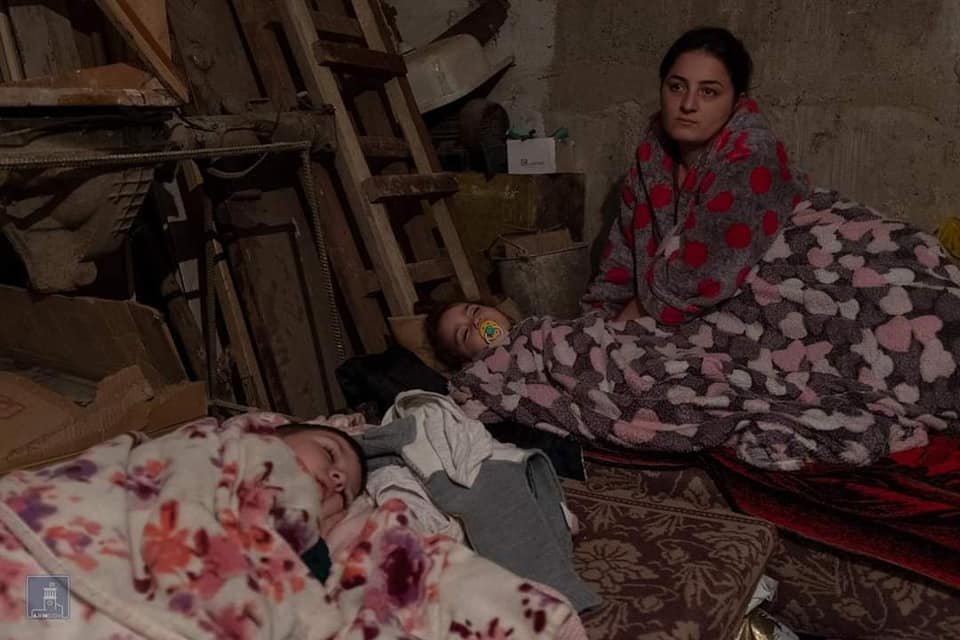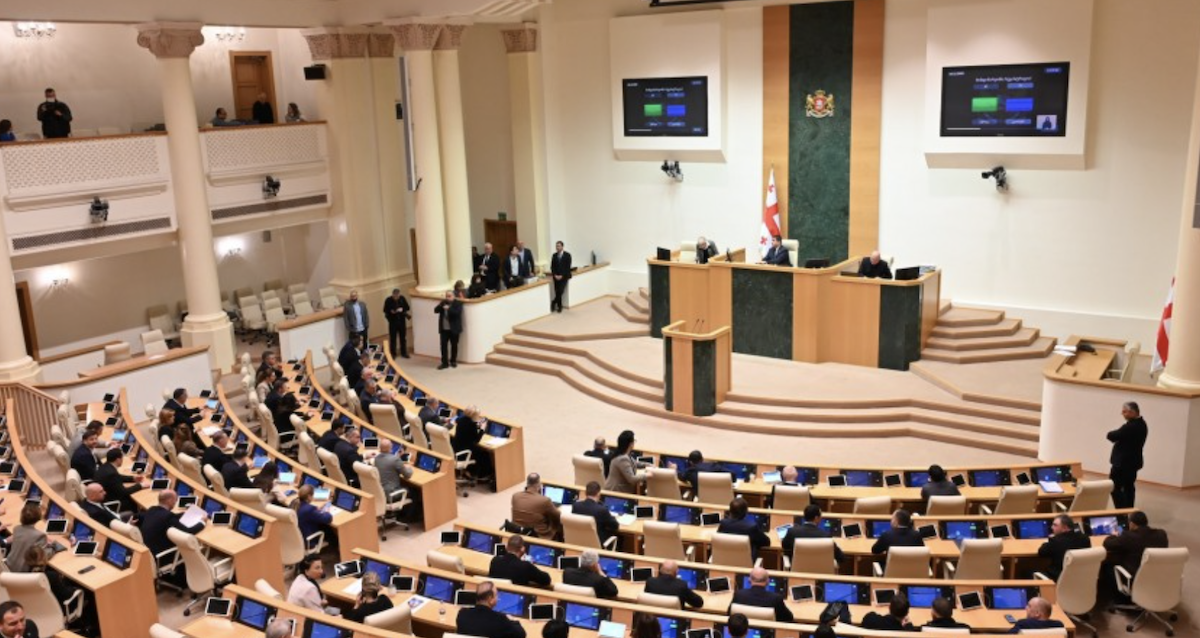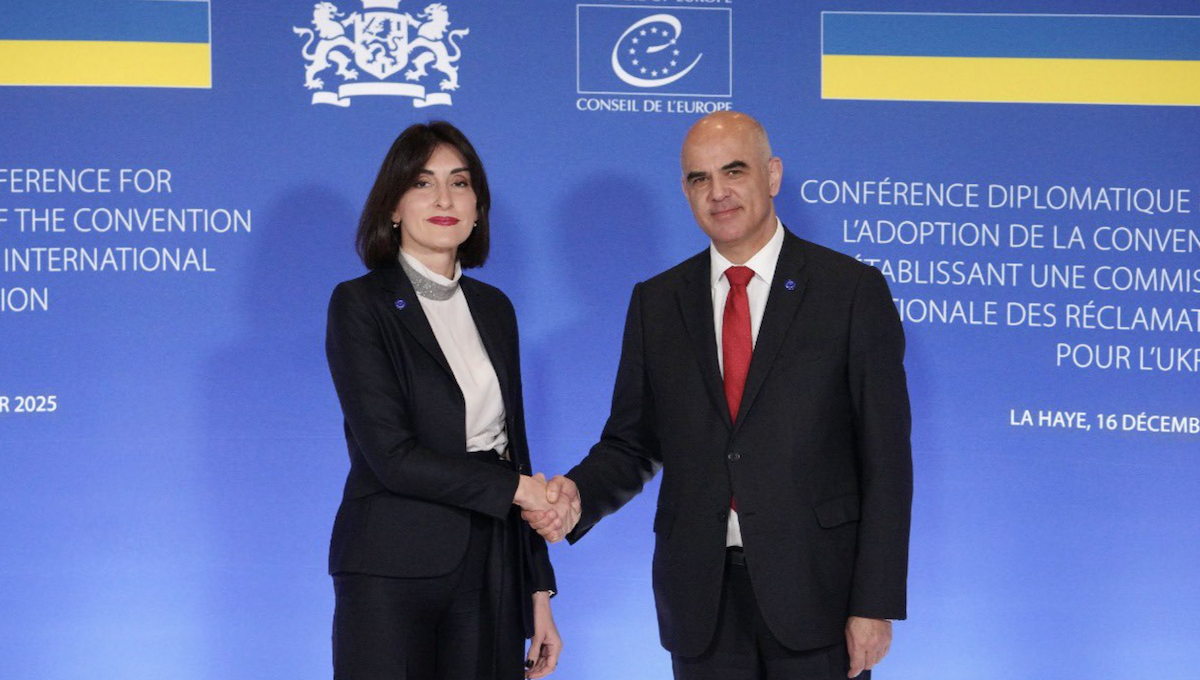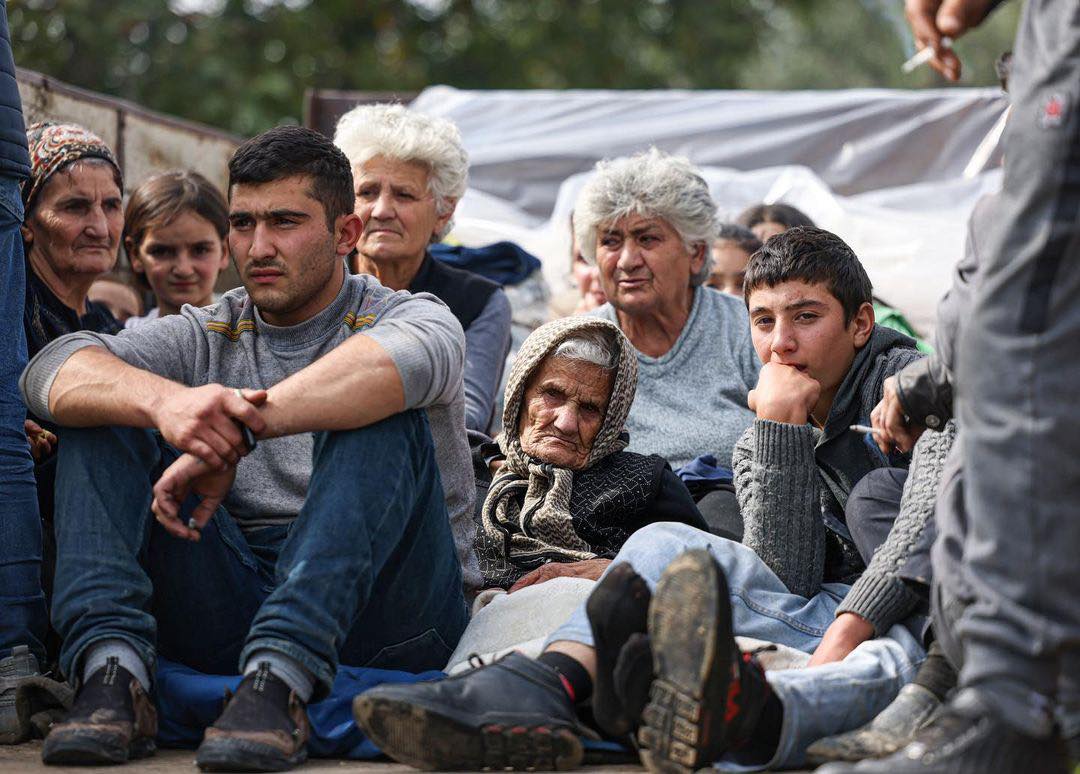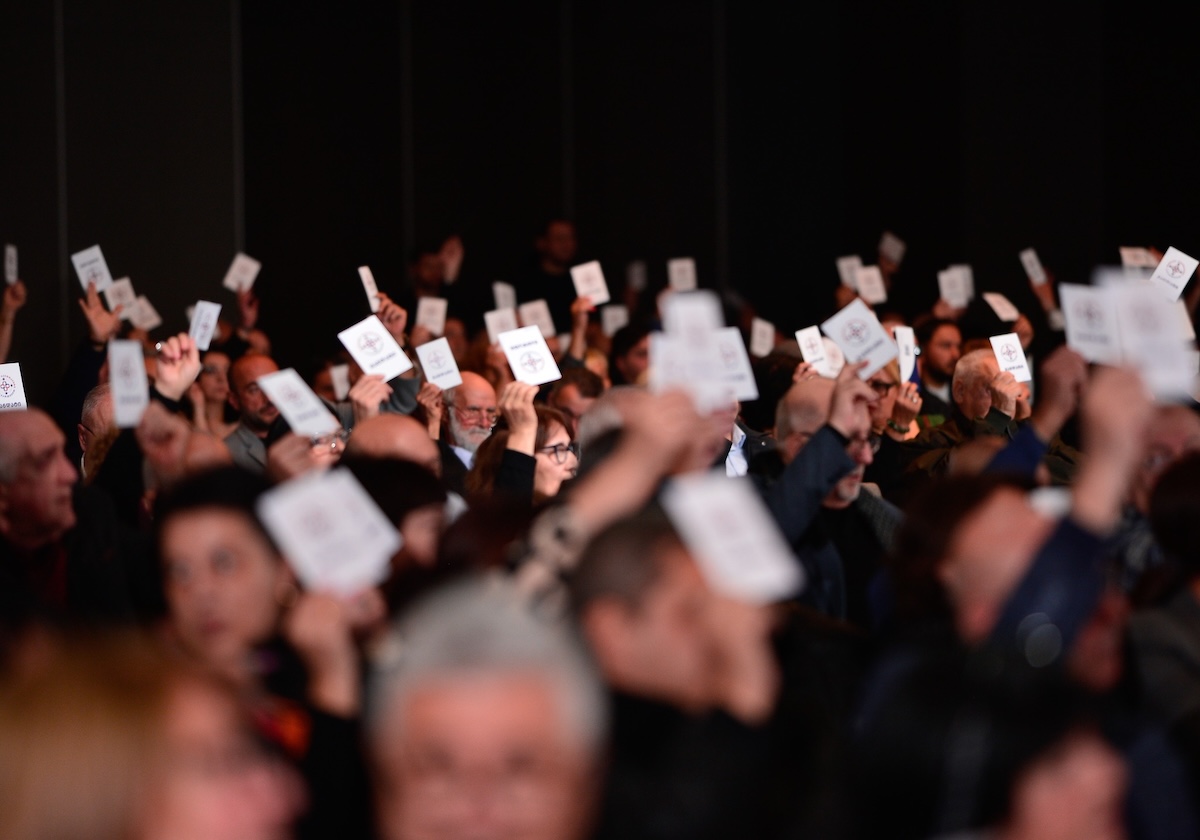Op-ed: a look at the Karabakh conflict from the outside – Armenia has missed a chance for compromise
In over a month of fighting in Nagorno-Karabakh, more than 1,000 servicemen have been killed, the Defense Ministry of the unrecognized republic of Artsakh says.
Journalist Kirill Krivosheev, who visited the conflict zone, reviews the history of the confrontation and comes to the conclusion that the Armenian leadership’s unwillingness to withdraw troops even from the territory of strategically unimportant and lifeless villages that the Azerbaijanis left many years ago did not leave Baku any other choice and now is costing many lives.
Originally published in Russian by The Insider
The current war in Karabakh can be called a great lesson for those who do not take the enemy seriously and put emotional arguments above rational ones.
“They don’t know how to fight, that’s why they are inserting some militants from the Middle East into their positions.”
“We know for sure that we are at war on our land, and they are just barbarians who have come to rob it. Of course, our fighting spirit is higher!”
All this was heard, of course, from both sides in the Armenian-Azerbaijani conflict. However, the material and technical advantage even by 2016, and even more so by 2020, was in the hands of Azerbaijan.
Then another argument came into play: “They will not dare [to attack], no one will allow them to use force, Russia, Europe, the United States will intervene!”
But this idea crashed into reality.
To understand why this happened, you have to go back 26 years.
The first thing to note about the Karabakh is that the territory is heterogeneous and has never been populated exclusively by Armenians.
It is difficult to draw a map of the conflict zone. Using the Soviet-era Nagorno-Karabakh Autonomous Region (NKAO) map, as of 1989, 77 percent of the inhabitants were Armenians, and 21 percent were Azerbaijanis.
This region was located in the west of the Azerbaijan SSR, but, oddly enough, did not adjoin the Armenian SSR. Between Armenia and the Armenian ethnic enclave in Azerbaijan, there were two regions inhabited by Azerbaijanis – Lachin and Kelbajar. And to the south and east of the NKAO there were five more regions, also Azerbaijani.
The total population of these seven districts numbered about 700,000 people, and all of them were forced to flee as a result of the 1992-1994 war.
The logic was simple: the Armenians needed to ensure an uninterrupted corridor with Karabakh and withdraw the front line about 30-40 kilometers from the capital.
This was enough to defend against the weapons used at that time – Soviet D-30 howitzers and Grad rocket systems.
The reason for the victory of the Armenians in 1994 has been debated over the past 26 years. Russian aid is also mentioned (although General Vladimir Shamanov fought on the Azerbaijani side), and political instability in Baku – instead of a single army, the battle had to be fought by scattered detachments, and in 1993 it almost came to a civil war.
The situation that developed then and lasted until September 27 this year looked strange.
About 100,000 people lived quite calmly in Stepanakert and Shusha, but to the east of them there were practically lifeless territories. Martuni, Martakert and Hadrut are considered cities, but the population of each of them did not exceed 5,000 people.
The military justification to keep them under its control also disappeared – instead of Soviet howitzers, Russian missiles appeared in Azerbaijan’s armament, as well as Turkish and Israeli drones, for which 30 kilometers is not a distance at all.
In the end, four UN Security Council resolutions hung over the Armenians, ordering the liberation of the Azerbaijani regions.
But in Yerevan and Stepanakert they were simply brushed aside, claiming that the population of Karabakh was under ‘existential risk’. And to give Azerbaijan at least a meter of territory would mean to increase this risk.
In Baku, they exhorted: after the liberation of the regions, the lifting of the economic blockade awaits you, and the unstable truce will be replaced by a lasting peace.
But this did not help, because the next stage was to be negotiations on the status of the NKAO itself, and the only option acceptable for Armenians – independence – was unacceptable for Azerbaijan.
Yerevan argued its refusal to even consider the option of ‘broad autonomy’ for Karabakh Armenians with examples from the post-war reality.
If people with a Russian passport but an Armenian surname (and even children) are simply not allowed into Azerbaijan, claiming that they ‘cannot ensure their safety,’ how can there be talk of quiet cohabitation in neighboring villages?
Most often in this context, the Armenian side recalls the case of Ramil Safarov, an Azerbaijani officer who killed his Armenian colleague with an axe during an exercise in Budapest in 2004.
A Hungarian court sentenced Safarov to life imprisonment, but after diplomatic bargaining, he returned to Baku in 2012 and was immediately pardoned and also promoted.
One of the Azerbaijani diplomats in a conversation with me admitted that this case canceled out many efforts on the diplomatic front and gave the Armenians an excellent trump card. But the opposite is also true – by their intractability, the Armenians made the current situation possible, and now even Russia and the West together cannot help them.
Armenian Prime Minister Nikol Pashinyan recently said that the last chance to resolve the conflict through diplomatic means was missed in Kazan in 2011. It is difficult to judge how true this is – the content of those negotiations is known only from the stories of the interested party, ex-President Serzh Sargsyan.
But even if this moment is not evaluated, the inevitable question arises – what, in this case, has Armenia been doing in the negotiations for the past nine years?
The answer is simple – it dragged out the negotiations, believing that the issue of transferring the districts would not have to be resolved at all. And if it did, it would not be for this generation, but in 50 years, when everyone will forget about the terrible events of the 80s and 90s.
There have been many aggravations over the years, but two rules were obeyed: the parties always accused each other of violating the truce, and in both capitals they always came up with a seemingly logical reason why the enemy should do this.
Most often – economic or pre-election – “it is necessary to distract the electorate from real problems.”
But there were also exacerbations “for negotiations” when, on the eve of an important meeting of ministers or presidents, the parties tried to consolidate their diplomatic positions on the battlefield.
A chain of “frivolous” exacerbations, which lasted no more than four days and ended in nothing, led to the fact that they simply stopped believing in the very possibility of a real war. Meanwhile, Baku was preparing for it, and at least over the past year they have been preparing closely.
Back in May 2019, I came to Yerevan, and then to Baku, to write about the program on ‘Preparing peoples for peace.’
It was supposed to include mutual visits of journalists and the very restoration of trust, then to move on to more important issues. But the Azerbaijani hawks even then called the initiative ‘chattering’ the issue.
According to Azerbaijani diplomats, since 2018, Pashinyan has been promising to start constructive conversations as soon as he strengthens his own power, and then deceived them, saying exactly one year ago: “Karabakh is Armenia, period.”
For Azerbaijan, this then became a trigger.
According to the official version of Baku, both in July and September of this year, the Armenians were the first to shoot.
Frankly speaking, I do not believe this – it is absolutely unprofitable for Armenians.
But for balance, I can assume: in response to a minor incident, which in normal times would have simply been ignored, the Azerbaijani army responded with a large-scale counteroffensive.
And in just a month, it occupied four of the seven regional centers under the control of the Armenians: Jebrail, Fizuli, Zangelan and Gubadli.
True, the critics here too have found something to complain about – in a whole month the vaunted Azerbaijani army could achieve more and advance in the mountains, and not only on the plain along the Araks River.
Critics can be answered: yes, at first the Azerbaijanis took the positions that are easier to take, but there is logic in this.
First, all the liberated cities are on the border with Iran, and taking control of the state border is a priority task for any country.
If this is not done now, then this territory runs the risk of becoming a zone of protracted battles with the inevitable falling of random shells in Iranian villages – and who would want to make excuses for this?
Second, having established a foothold in the south, Azerbaijani troops are confidently moving north to the Lachin corridor, one of the two main roads connecting Yerevan with Stepanakert.
If the Armenians lose it, the capture of the capital will be a matter of time. But Armenian patriots are beginning to argue here too: “In 1992 we were able to fight back when the Azerbaijani military held both Lachin and Shusha, from which Stepanakert is being fired upon by direct fire.” But there was a different balance in fire power at the time.
More important, in my opinion, would be to look back and think about how all this could have been avoided.
Why was it possible to end the past exacerbations with a couple of calls from Moscow, and this time even three truce agreements, signed with the participation of mediators, have not helped? Where did Azerbaijan get so much courage to declare that it will not stop until Armenia presents a plan to withdraw its troops?
The answer is simple: because Baku failed to achieve the withdrawal of Armenian troops in other conditions for 26 years. There is no talk even now about the readiness to leave the remaining territories without a fight in exchange for peace.
“We are ready to make mutual concessions, even concessions that are painful for us, but the Armenian people will never be ready to surrender,” Nikol Pashinyan said, without explaining what ‘painful concessions’ are meant.
Meanwhile, it is worth considering how many people died defending the lifeless ruins in the Jebrail and Fizuli regions (people left these villages back in 1994, and even on Google Maps you can see that there are only remnants of houses without roofs) and voice an unpleasant thought for Yerevan – if these territories were transferred in the course of negotiations, there could be no armed revenge. Such a retreat would not bring a military threat either – only political damage, but this is a topic for a separate conversation.
And now the co-chairs of the Minsk Group (Russia, USA and France) simply have no arguments why Baku should not act the way it does. Everyone understands that without the war they would not even get a village with a couple of ruins.
Perhaps, if a humanitarian catastrophe develops after the capture of the Lachin corridor in Stepanakert, the conversation will be structured differently, but so far this is not the case, the reaction will be indifferent.
In addition, if until September of this year it was only possible to talk about areas where the Armenians had never lived, now the situation is developing according to the logic of war, and in the war they do not particularly look at administrative borders.
Maximalism is characteristic of both sides of the Nagorno-Karabakh conflict.
But if in Azerbaijan this maximalism was based on its own forces, in Armenia – on the belief that others would protect them.
As practice has shown, at a critical moment they simply expressed sympathy.
Although it may not be so unambiguous after three missile strikes on Ganja, even if they were a response to the shelling of Stepanakert. It’s one thing to shoot at a city where people are generally accustomed to war. And quite another – in residential areas 50 kilometers from the front line, where the war was seen only on TV.
According to Nikol Pashinyan, now “every (Armenian) man should get up and go to the military registration and enlistment office.”
But this appeal looks like a desperate attempt not to become the leader of an Armenia which has lost all of Karabakh. Apparently, he will have to come to terms with the loss of the largest part of the territory since 1994.
Knowing his character, we can assume that now he is thinking about the consequences of what happened for his political career. But it would be better if he thought about something else – how to save human lives in the face of an offensive of an obviously stronger enemy.










